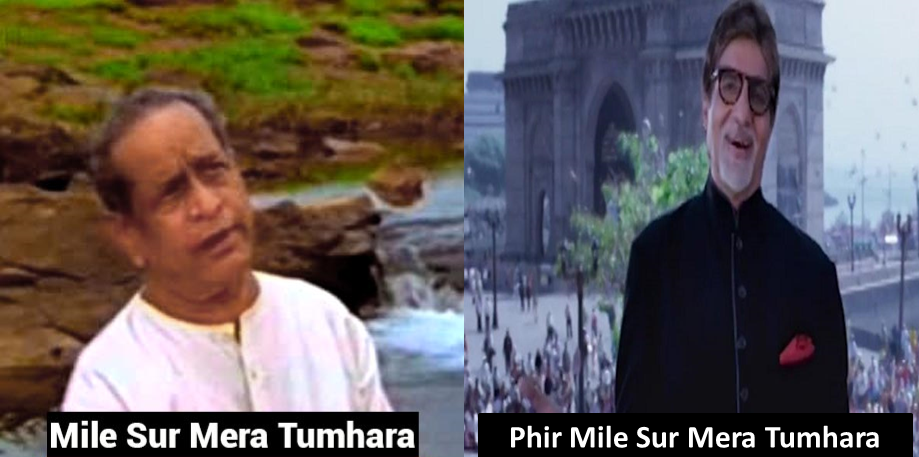The latest version of the popular song is certainly more glamorous but it hardly represents an India in which common people live. The song negates the place of the common people and allows celebrities alone to paint the picture.
Anirudh Roy is a Photographer and Independent Film Maker and based in Shilong.

If you are a 90’s kids then it is obvious that you must have seen the popular song on Doordarshan channel ‘Mile Sur Mera Tumhara’ – recorded in 1988 and broadcasted on Doordarshan channel. This epic and nostalgic song had illustrated the diversity of India – its culture, national integration, types of landscapes and a sense of pride in just a couple of minutes.For thousands of us, this song was the first window that represented the glimpse of the entire nation.
We were unaware of the fact that it was first telecasted on 15th August, 1988 and singers like Pandit Bhimsen Joshi, Lata Mangeskar, Suchitra Mitra and other prominent artists sung this song in different languages. The song is seen to be featuring ordinary people from around the nation – a boat man from Kerala, Punjabi farmers riding a tractor, people from Kolkata coming out of a metro train, Bharatnatyam dance from Tamil Nadu, Goan fishermen, Bhimu dance of Assam and many other forms and symbols that represents the diversity of nation. It cannot be ignored that the song had missed many significant contents of representation and could have carried many more visuals, but what cannot also be negated is the fact that it is in many ways it was better than the songs of nationalism that we often encounter in our times.
On 26th January, Zoom TV produced a new version ‘Phir Mile Sur Mera Tumhara’. The song starts with film star Amitabh Bachchan and features popular cricketers, film personalities and a prominent business man but misses out on the ordinary people, who are hardly ever visible in the song. In the name of regional representation of the different states we saw- Gurdas Maan from Punjab, Rituparna Sen from Bengal, Mary Kom from Assam, Mahesh Babu from the South and various other actors, singers and known personalities from different part of the nation.
The song has missed many things that disqualify it from representation of the real India – the symphony of Indian culture and its diversity that was presented in the last one. The song is more glamorous than its older counterpart but misses the essence. There is no ordinary India; it represents an India of the rich and the famous. There were no ordinary people – farmers, boatmen, laborers, children, women, Adivasis etc. What then is ‘Indian’ about this song on India?
Although, I was not very surprised after watching the video in present times, what bothered me was the fact that, the song represented a very unrealistic, undemocratic picture of the nation. The song has portrayed that the people are unimportant and can be treated as mere vote banks and potential consumers, but in the popular imagination of the country, only the celebrities and the affluent are significant.










